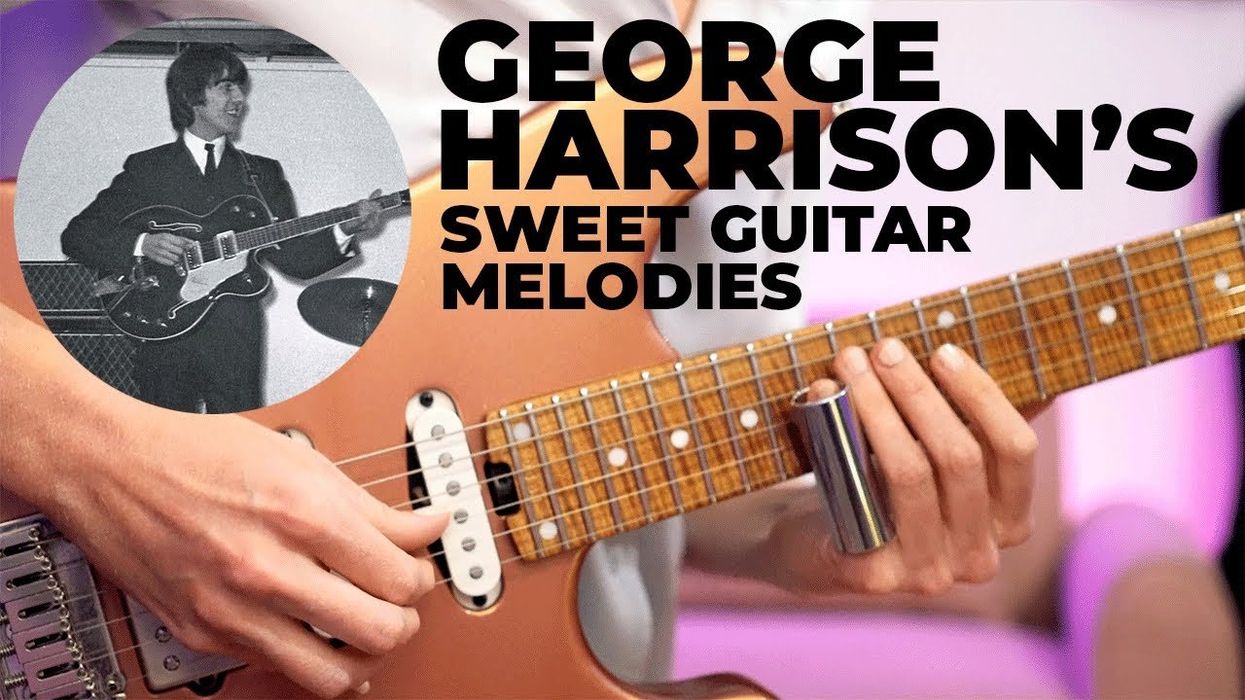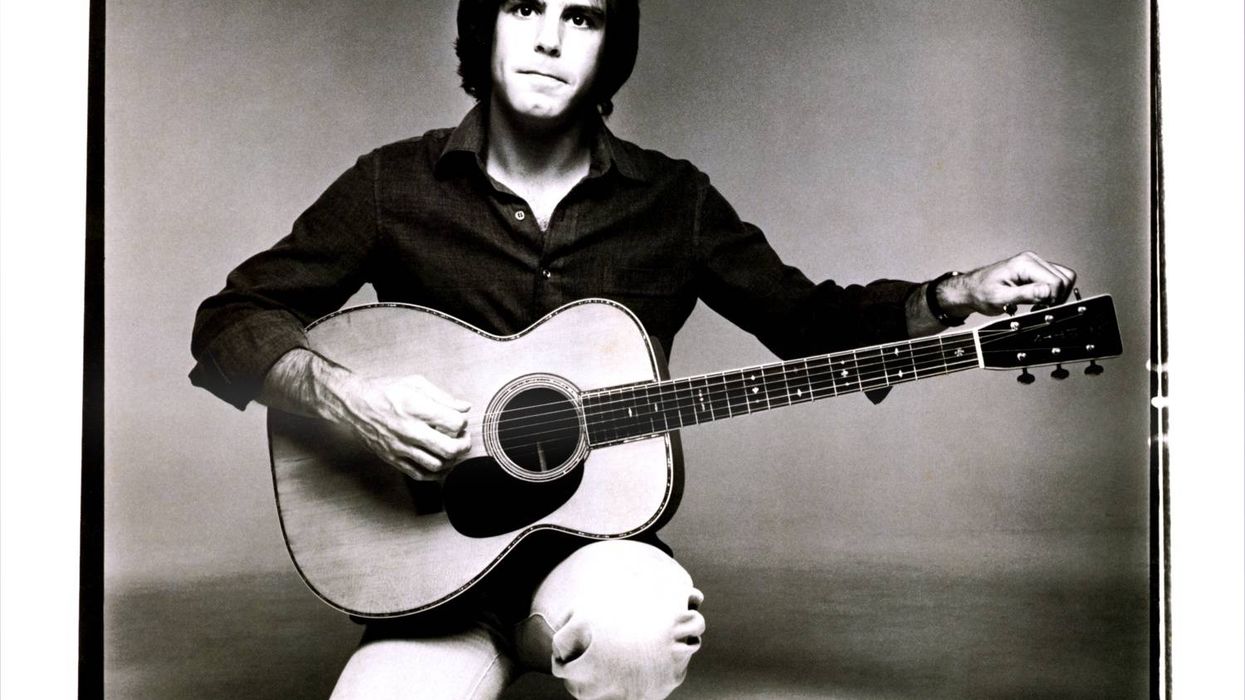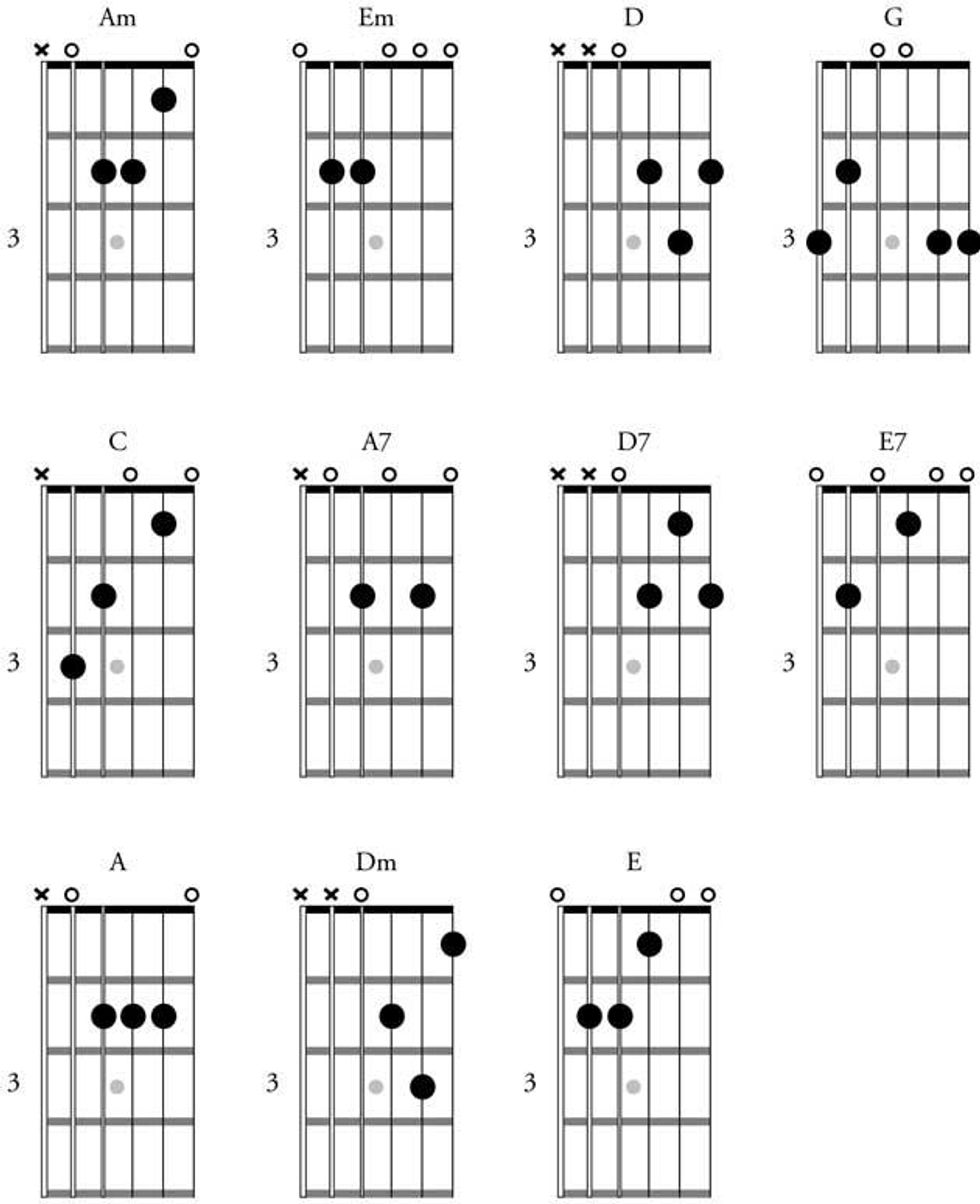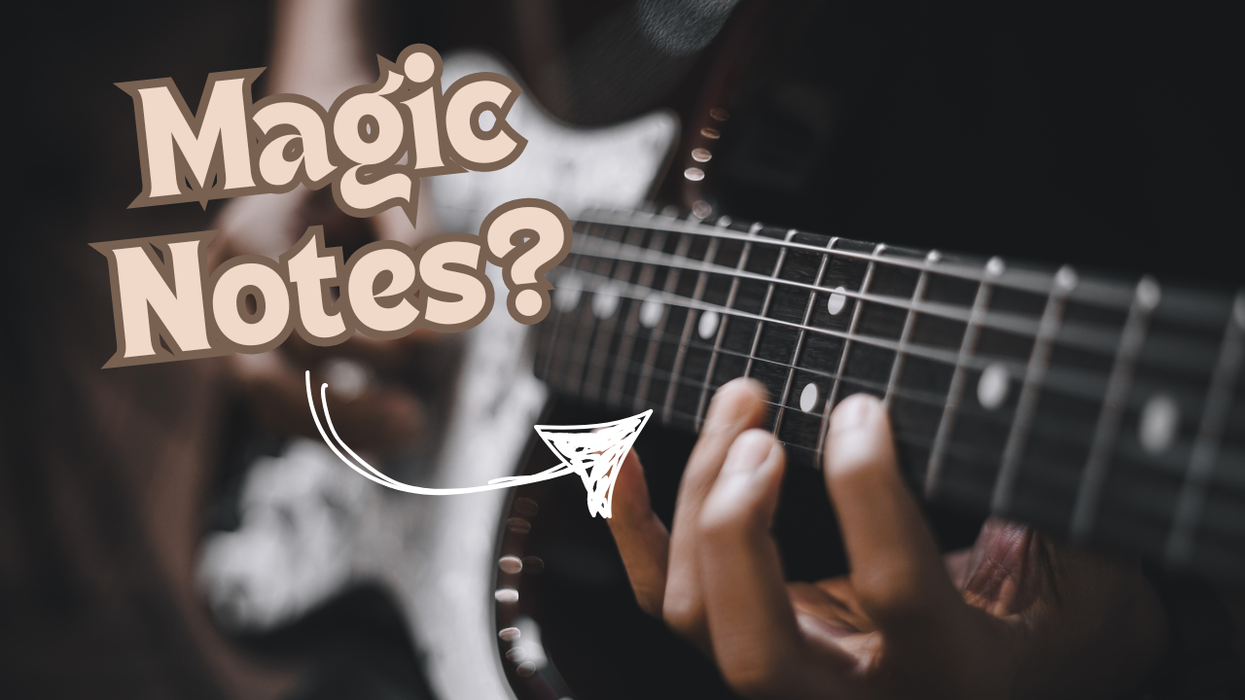Theory: Intermediate
Lesson Overview:
• Learn the principles of Lenny Breau’s playing style.
• Understand common movements that Breau used in his arrangements.
• Learn to play and apply advanced “harp” harmonics. Click here to download a printable PDF of this lesson's notation.
The late guitar giant Lenny Breau was known for incorporating the intricate sounds of Bill Evans-style piano jazz, flamenco, country, and classical music (both Western and Indian) into a fingerstyle technique that became a sound all his own. Breau astounded other players with his mastery of hyper-efficient techniques to create deep and expansive listening experiences. In so many words, Chet Atkins, his longtime mentor and a surrogate father figure, referred to Breau as a comet just passing through our atmosphere.
After mastering the harp-harmonic technique developed by Atkins, Breau took it to previously unimagined levels. He used sheets of cascading harmonics to create complex harmonies and melodies, and seamlessly wove their shimmering sounds into his arrangements and compositions. In this lesson, we’ll explore some of Breau’s fundamental techniques with the goal of helping any daring souls adopt what they can from his music and—at the very least—help listeners approach his repertoire with a better understanding of how he expressed his thoughts and emotions on the fretboard.
Breau was born to a musical family and grew up listening to country music and learning about Chet Atkins and other fingerpickers. By the time he was a teenager, he had essentially mastered Chet’s skill set and then turned to flamenco guitarists, Indian classical musicians, Western classical musicians, and especially jazz pianists like Oscar Peterson, McCoy Tyner, and Bill Evans.
He typically played a nylon-string guitar, steel-string electric guitar, and eventually a 7-string Kirk Sand electric guitar. For the 7-string guitar, instead of extending its range with another bass string, Breau added an "extra” treble string tuned a fourth higher than the standard top E string. This high A string opened new possibilities for chord voicings and melodic phrases, and he took advantage of it. His lowest six strings remained the same as a standard-tuned guitar, which yielded a 7-string tuning of E–A–D–G–B–E–A.
Breau also used a capo on occasion. This is worth noting because there’s a stigma among jazz guitarists that a capo is a crutch, but capos are almost always accepted among fingerstyle players. In the video below you can see Breau play some improv around a Bach piece with a capo at the 2nd fret. Using a capo would have some effect on how Breau was able to arrange for the guitar, considering that tuning, key, and capo position will affect one’s range and freedom to reach certain musical gestures on the neck.
In terms of right-hand technique, Breau played with a thumbpick and nails, and used a light touch. When plucking fingerstyle patterns, he anchored his pinky on the guitar for stability, but when he took solos, he usually raised his pinky off the body. Breau was born with a deformed pinky that was bent in such a way that it was almost parallel with his other fingers, and this allowed him to pluck artificial harmonics with his pinky, rather than relying only on his thumb to pluck and index finger to touch the octave node. He also used this crooked digit to pluck cascading harmonic rolls. The rest of us should be able to play these rolls just fine using the ring finger.
Change It Up!
Let’s start with a lesser-known Breau technique: While sustaining a note, he had the ability to completely change hand positions without affecting the sound. Ex. 1 and Ex. 2 demonstrate this, first along a single string and then across all six strings. When practicing this “stealth fingering shift,” the goal is to sustain a single note completely while you switch from one fingering to the other. Try to minimize string squeaks when you shift fingerings.
Click here for Ex. 1
Click here for Ex. 2
You can use this technique to sustain a melody note while preparing to reach a chord further up or down the neck. To do this well, you have to know exactly where your next moves are on the fretboard and know exactly which note you’re intending to sustain—and for how long. Sitting or standing straight as you do this exercise will give you a better chance of executing it without tangling up your fingers too much.
Shell Chords
Breau’s arrangements weren’t necessarily minimalistic, but the way he approached chord voicings was. This allowed him to do more with less physical energy. Lenny used shell chords, which in this case are two-note chords composed only of the 3 and the b7 of a dominant chord shape.
Ex. 3 demonstrates how you can imply various dominant chords on different sets of strings. Notice that all these shapes are within a few frets of each other. Here, the b7 is the lowest note in each shell chord. Playing a full chord progression with the 3 and the b7 can take as little as two strings and four frets.
Click here for Ex. 3
If you want to expand these shell chords and add bass lines, there are one or two available strings below the shell chord. Ex. 4 illustrates how to create a fuller sound by adding a bass note directly below a shell chord. Notice how for D7, the b7 (C) is now the highest note.
Click here for Ex. 4
Ex. 5 demonstrates how to play a complete 12-bar blues progression using only two strings, three shell chords, and four frets. Each time you shift chords, pay attention to the role the notes are playing. Is the 3 or b7 the lowest note? Or highest? It goes back and forth.
Click here for Ex. 5
Ex. 6 shows a blues phrase with a single-note melody on top of a sustaining shell chord. Each time you change chords, there’s a corresponding fingering change. This frees up your other fingers to access melodic variations.
Click here for Ex. 6
Harmonics
Breau had such a solid grasp of the basics that he could push the limits of the guitar and go off on musical tangents without getting lost. One area where this is most evident is through his understanding and application of harmonics. While Chet Atkins essentially invented the use of harp harmonics, Lenny was able to execute them as effortlessly as he could fretted notes.
Octave harmonics occur 12 frets above either an open string or a fretted note because that splits the vibrating string exactly into two equal parts. You’ll find open harmonics all over the strings if you look for them, but essential ones are at the 5th, 7th, 9th, 17th, 19th, and 21st frets.
Ex. 7 runs through the natural open-string octave harmonics at the 12th fret. You can play these harmonics using your left hand to touch each string at the 12th fret while plucking with your right hand. But to get a feel for Breau’s harp-harmonic technique, try playing the 12th-fret harmonics using only your picking hand. To do this, touch each string at the 12th fret with your picking-hand index finger while simultaneously tucking your thumb behind the index finger and plucking the string with your thumbnail or with a thumbpick. Lenny used this hand position to pluck harmonics in this performance of “I’ll Remember April.”
Click here for Ex. 7
Fretted Harmonics
Ex. 8 requires that you use the same one-handed plucking harmonic technique from the previous exercise, only this time you’ll be fretting a barre chord and playing the harmonics from that chord. Visualize the chord shape 12 frets up to pluck the correct harmonics. Here, you are barring at the 5th fret, so you would calculate 12 frets up from that, and pluck each harmonic at the 17th fret.
Click here for Ex. 8
You’ll use this same concept for the Ex. 9 and Ex. 10, which are composed using more complex chord shapes instead of a barre chord.
Click here for Ex. 9
Click here for Ex. 10
Cascading Harmonics
Here’s how Tommy Emmanuel describes fretted and cascading harmonics, which are also known as artificial harmonics: “They are real harmonics, they’re just not all harmonics.” With cascading harmonics, you can begin the roll by picking the 6th, 5th, and 4th strings and then going up the strings and back down while weaving in a combination of fretted notes and harmonics (Ex. 11).
You need to spell out the chord as you pluck the harmonics for every other note. The picking-hand middle finger on the serves as a decent balance beam to keep your hand steady as you go between picking harmonics and picking fretted notes. To accurately spell out complex chords, sometimes it helps to anchor your pinky on the guitar body.
It can take a lot of time to drill the moves to play cascading harmonics into your hands, so one way to practice this is to use only the picking pattern from Ex. 11 at the 12th fret without trying to fret any notes with the left hand.
Click here for Ex. 11
To add more depth to the cascading harmonic technique, Breau also introduced pull-offs into his harmonic rolls. This uses the same picking pattern, but the left hand is fretting hammer-ons and pull-offs to the chord at the same time (Ex. 12). The hammer-ons and pull-offs used in this exercise are fretted notes, not harmonics. They’re only mixed in with harmonics. Notice how the notes are very close together on the musical staff—this creates a lovely, ringing dissonance that Breau often incorporated into his chordal playing.
Click here for Ex. 12
Ex. 13 is another way to play harmonics: Half of the notes are harmonics and the other half are fretted, but one of each type of note is played in rhythmic unison. When mixing harmonics and natural notes together, it can be helpful to pluck the harmonic notes a little bit louder if you can, while also plucking the normal notes a bit softer. The normal notes have a tendency to be louder than harmonics, so compensating for this adds an extra layer of cohesiveness and musicality to playing harmonics and normal notes together. Learning to control the dynamics in a situation like this allows you to translate more emotion in a harmonic passage, rather than just displaying a difficult technique.
Click here for Ex. 13
Choosing Chord Shapes
Breau figured out a set of general guidelines for choosing interesting chords to interpret with harmonics. For instance, if you were to play harmonics with a standard “E” shape, the chord would be pretty, but it wouldn’t have much depth. That’s because the different inversions of a standard major or minor chord are going to contain redundant notes when played with this technique. This is quite obvious if you apply a cascading harmonic roll over a standard major or minor chord, regardless of its inversion. By contrast, if you use a chord with at least four or five different notes in it, you have more options. If it sounds like a chord Debussy might have played on piano, it may work really well for harmonics. To generate harmonic-friendly voicings, try including a 7 or lowering the 5.
While this lesson only scratches the surface of Lenny’s depth and complexity as an artist, I hope it serves as a solid entry point for you to learn, enjoy, understand, and possibly continue his ideas on the guitar.
Sincerest thanks to Dr. John Knowles, CGP, for his help and guidance in writing this lesson. For more on Lenny’s playing style, I recommend Lenny Breau Fingerstyle Jazz, published by Mel Bay. Dr. Knowles worked directly with Breau to write this book just a month before Breau’s untimely passing, and it goes into extensive detail to explain fundamental elements of his unique style, as well as transcriptions of some of his arrangements.



















